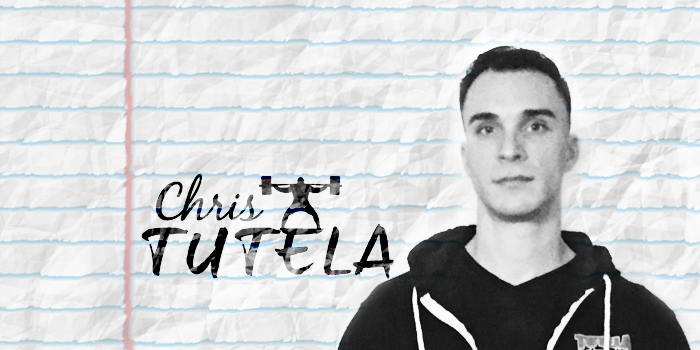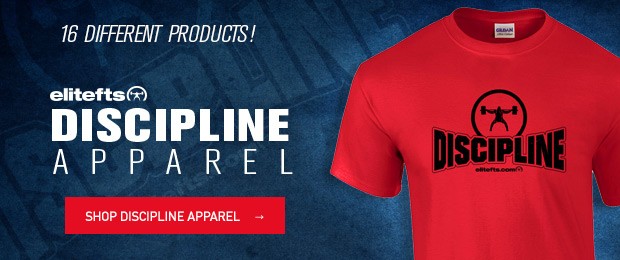
Sport-specific training is a term that gets thrown around very loosely these days. Coaches prefer using particular movements because they are supposedly “sport-specific.” There is certainly a time and a place for some of this stuff, but many coaches and athletes lose sight of what is most important: laying a foundation and developing true strength and stability before getting into these “sport-specific” movements.
For example, most high school athletes do not have the strength or awareness to perform a proper deadlift, yet some coaches will have these athletes perform power cleans right off the bat. That isn’t to say that high school athletes shouldn’t ever perform a power clean if properly coached. I am saying that we do not see enough progression and mastery of the basics before moving on to bigger, more complex lifts like the clean. A lot of athletes do not even have the strength or stability to perform a proper push-up, yet they are using complex movements that take years for even advanced trainees to master.
RECENT: 6 Lessons to Become a Better Strength Coach
From my experience of working with athletes of the high school level, here are some common issues I have found over and over again:
- Weak posterior chain
- Weak upper back
- Weak core
- Instability of the core, wrists, and ankles
- Inflexibility of the hamstrings and glutes
- Tight hip flexors and piriformis
- Lack of coordination and body control
- Difficulty squatting to parallel (may be due to several of the above factors)
Of course, there have been more issues that vary between individuals, but these have been the most common that I have come across. When you take a look at all of these common issues, you then understand that there are more important issues to address than just the bench, squat, deadlift, and clean. If you fail to address these issues, it will come back to bite your athletes in the ass at one point or another.
Our job as coaches is to not only get our athletes bigger, stronger and faster but to keep them healthy and in the game! It is up to us to take the time to program the basics and keep our athlete's well-being in mind, instead of trying to just create a “badass” workout.
I want to run through each one of the common issues that I listed above, and go over ways to address each problem.
Issue #1: Weak Posterior Chain
The lower back, glutes, and hamstrings are three of the muscles that make up the posterior chain. All three have a direct effect on power and athletic performance. A strong posterior chain will help your athletes become stronger, faster, and more explosive, as well as help prevent lower back and hamstring issues. Needless to say, developing the posterior chain is VITAL for any athlete or lifter. You can begin developing the posterior chain by using Romanian deadlifts (RDLs). RDLs are a little easier to teach younger athletes since the movement is a little less complex than a traditional deadlift. Once they’ve mastered the RDL, then you can progress to the single-leg dumbbell RDL. This is a great way to develop balance and the muscles of the feet while simultaneously improving ankle stability, which I will touch more on later. There are plenty of great exercises to help develop the posterior chain. The ones I like to use first for my more underdeveloped athletes are the 45-degree back extension and the RDL to teach proper positioning and spinal alignment before progressing to the deadlift. Once we get to the deadlift I always teach a pronated or double overhand grip first to develop strength in their hands and forearms.
Issue #2: Weak Upper Back
One of the rules for my programming is to always pull more than you push. Horizontal pulling like bent over rows, single-arm rows, cable rows, chest-supported rows, Kroc rows, and Pendlay rows are all great for helping build a strong, thick upper back. A strong upper back will help keep the shoulders healthy and help increase your athlete’s bench press. It is absurd that coaches program for their teams and do not incorporate any upper back work. And when they do, the athletes go way too heavy and their form goes to absolute shit. A good rule of thumb when rowing is to work with a weight you can pause with in the top or retracted position if you want to. Make sure they can fully retract the scapula and control to full protraction, rather than making a row an ugly bicep curl.
Issue #3: Weak/Unstable Core
A well-balanced training program will help add stability to the core. Developing the posterior chain and upper back will carry over to more core stability, along with the development of other muscle groups from head to toe. Keep in mind that the main function of the core is to stabilize the spine while the limbs are in motion. So, learning to keep the abs braced while performing big movements like the squat and deadlift and their variations is one of the best ways to train and develop the musculature that makes up the core. Loaded carries are also one of the best ways to teach your athletes how to keep the abs engaged while moving through space. However, it is just as important to train the core directly. Plank variations, Turkish get-ups, hanging knee/leg raises, medicine ball throwing variations, and rotational movements like Russian twists are all great for fully developing a well-rounded core.
Issue #4: Instability of the Wrists and Ankles
It’s extremely common to find high school athletes with weak, unstable wrists and ankles. It’s easy to spot this when they bench press and squat. Oftentimes the wrists are bent back when they bench, and when they squat their heels come off the floor. Here’s the remedy. Wrists Obviously, the first thing you have to do to address the issues with their wrists is to make them aware of what they are doing when they bench. Show them what they’re doing and how it should look. They have to be conscious of what they are doing in order to improve it. Then work on their hand, grip, and forearm strength. Loaded carries, fat bar holds, fat bar presses, fat bar chins, fat bar rows, thick handled dumbbell carries (all of these could be done by slapping a pair of Fat Gripz on your dumbbells or barbells) are all great. You can also grab a bucket and fill it with rice or sand, then stick your hand in and open and close your hands repeatedly for reps. Tools like a good gripper and a wrist roller are also great and will help develop your hands, wrists, and grip. Ankles Instability of the ankles usually stems from tight calves and weak ankles and feet. You can start by breaking up the extremely tight fascia in the bottoms of your feet by rolling them out with a lacrosse ball. Also, incorporate stretching the calves along with rolling out the feet as part of your prehabilitation work on lower body days. Once you move onto your strength work for the day, it’s important to ditch the shoes and go barefoot during your lower body workouts. Barefoot training will prevent the ankles from relying on the added stability from sneakers, plus you will be directly training the musculature in the feet, which will help your athletes develop better balance. Another main focus should be unilateral work like step-up variations, single-leg squat variations like Bulgarian split squats and pistols squats, and single-leg RDLs. These movements are all great for helping develop strength and stability in the ankles and feet.
Issue #5: Tight Hamstrings, Glutes, Hip Flexors and Hip Rotators
These are some of the most commonly tight muscles in most of the high school and even college athletes I have worked with. Obviously, stretching and rolling the hip flexors, hamstrings, glutes, and piriformis during a prehabilitation phase is a must, followed up with a thorough dynamic warm-up.
However, over the years I have learned that using strength exercises that simultaneously stretch the musculature being trained is almost better than the direct stretches themselves. Take an exercise like an RDL, for instance. Not only will you strengthen the posterior chain and hips but you will also be actively stretching the hamstrings at the same time.
The same goes for a Bulgarian split squat. You are developing strength, balance, and stability, but also creating a tremendous stretch for the quads and hip flexors. Talk about a great training effect!
Issue #6: Lack of Coordination and Body Control
Many younger athletes have a hard time moving their own body through space. You’ll notice this when trying to teach them a proper pull-up, push-up, crawl, or handstand push-up. Most of the time it’s due to a lack of stability, mobility, and strength. Addressing the issues I have listed above is absolutely necessary to help your athletes learn body control.
However, we as coaches have to be sure to reinforce all of the basics and COACH our athletes on how to brace their abs or control their bodies during the eccentric phase of a pull-up. Again, if they aren’t aware of what they are doing wrong, how can they ever fix it. Bodyweight training is tremendous for teaching athletes the fundamentals that will even carry over to the bigger lifts by developing motor skills and teaching them to brace their core during movement. And this happens BEFORE their backs are loaded with 400 pounds.
If you are a coach, I really hope this article is useful. I find it all too common that many coaches doing great things get lost in what may be “sport-specific” or just programming exercises that are too much for their athletes to handle — and they do this simply because “they have always done it that way.”
We need to understand that young athletes need to develop from the ground up. They must learn technique and fundamentals, develop strength in weak areas, improve their flexibility and mobility, become stable, and THEN progress to the bigger barbell movements. Otherwise, we are only setting them up for disaster.
As always, if you have any questions on how I may address some of these issues at my facility feel free to shoot me an email at info@tutelatraining.com.
I hope this article can help take all of our athletes to the next level. Thanks for reading, guys.










